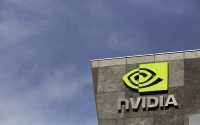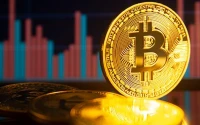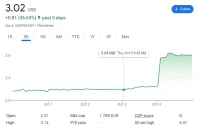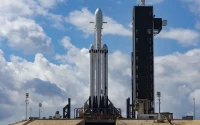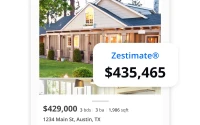Generated Title: Aster DEX: Is the Buyback Bonanza Sustainable, or Just a Pump?
Okay, let's talk about Aster DEX and this whole buyback frenzy. Three million dollars a day? That's not chump change. According to the press releases, Aster DEX is plowing protocol revenue into buying back its native $ASTER tokens – a total of $214.03 million so far. The stated goal is to reduce supply and goose the price. Seems simple enough, right?
Drilling Down on the Buyback Numbers
But here's where my internal alarms start blaring. They've repurchased, they claim, 143.38 million $ASTER tokens. That's about 7.11% of the circulating supply. Now, if you're burning that many tokens, you'd expect a commensurate rise in price, all other things being equal. Are we seeing that?
The live price of ASTER, according to CoinMarketCap, is around $1.03. Okay, but what was it before this buyback program went into overdrive? That's the key question. The article mentions CZ (Changpeng Zhao) buying over $2 million in ASTER tokens, which supposedly triggered speculative demand. (I’m always skeptical of attributing market movements to a single whale, even CZ.) If the price bump is only due to CZ's purchase and the ensuing hype, then the buyback program is just keeping the price afloat, not actually driving it upward organically.
And that leads to another, more fundamental question: How long can they keep this up? A $3 million daily burn rate is impressive. But where is that revenue coming from? The article mentions trading fees. So, we need to look at trading volume. Is the trading volume sufficient to generate $3 million net each day, after operating expenses? Or are they dipping into the treasury? If it’s the latter, that's a finite resource.
I've looked at hundreds of these reports, and this level of vagueness around the source of funds always makes me nervous. As reported by Aster News: Aster DEX Accelerates Daily Buybacks to $3M, the buyback program has recently increased to $3 million per day.

Cracks in the Narrative?
The article also touts Aster DEX's multi-chain presence – BNB Chain, Ethereum, Solana, Arbitrum. That's good for accessibility, theoretically. But it also means they're spreading their liquidity across multiple ecosystems. Are they the best DEX on any of those chains, or just another option? Being "everywhere" isn't the same as being dominant somewhere.
And then there's the backstory: a merger between Astherus and APX Finance, backed by YZi Labs (a Binance Labs spin-off). Mergers are always tricky. You're combining two different codebases, two different teams, two different cultures. Synergies are promised, but often not delivered. (The acquisition cost was substantial (reported at $2.1 billion).)
What happens when the market cools off, and trading volume dries up? Can Aster DEX maintain this buyback program? Or will the $ASTER token price crash back to earth?
Here's an analogy: Imagine a company that's using all its profits to buy back its own stock. The stock price goes up, everyone's happy. But what if that company isn't investing in R&D, or marketing, or new products? Eventually, the music stops. You can't buy your way to long-term success.
The Inevitable Reality Check
Aster DEX's buyback program is impressive, no doubt. But it's not a magic bullet. It’s a Band-Aid on a deeper issue: Can the platform generate sustainable, organic demand for its services? If not, this whole buyback bonanza is just a pump, and the dump is coming.

